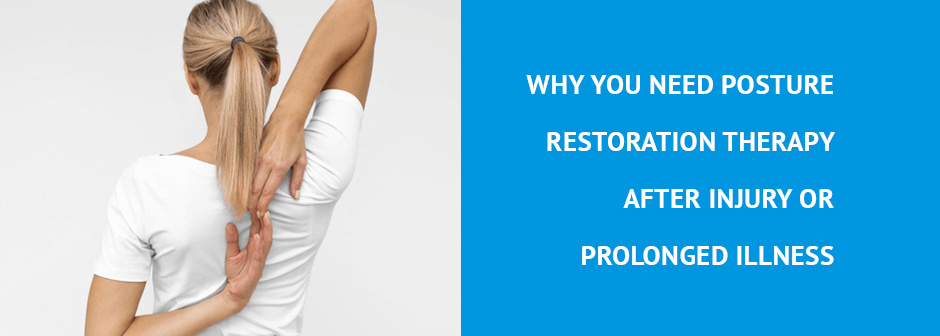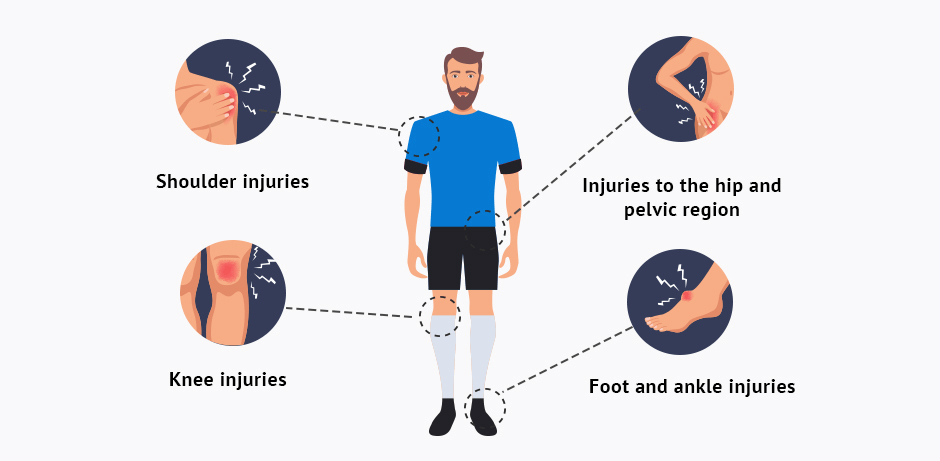
An injury or prolonged illness that immobilizes you for a duration of time can profoundly impact your posture. In many cases, after you heal and recover, you may not be aware of shifts in your body alignment. But suboptimal posture can cause a variety of movement deficiencies and pain syndromes, and it can set you up for further injuries down the road.
Postural restoration therapy identifies and corrects postural misalignment, to restore fluid pain-free movement and reduce the risk of future injuries.

Good posture depends on the mobility and stability of joints, which in turn are governed by the neuromuscular system. In effect, postural alignment requires a balance between the force of gravity and the forces generated by muscle contraction. When muscles are tight or weak, or when muscle tension is out of balance, it redistributes your body mass in suboptimal ways that affect movement and function.
After an injury or prolonged period of inactivity, muscle firing patterns are altered, and compensation patterns become habitual. You develop compensation patterns to unload and protect an injured body part while it heals. For example, if you sprain your right ankle, you will automatically shift most of your weight to your left limb to avoid pain and prevent further injury. Over time, your left limb becomes stronger and your right weaker, affecting the way your joints align along your entire kinetic chain.
Unfortunately, once damaged tissues are healed, there is no mechanism in place to signal your brain to restore normal loading patterns, and compensation patterns become the norm. Proper injury rehab needs to address the brain-body connection, to retrain optimal loading patterns and restore postural alignment.

Proprioception is your sense of the position of your various body parts relative to gravity. Proprioceptors are sensory nerve cells that send messages to your central nervous system about body position, to help you maintain balance and posture while sitting, standing and moving.
Proprioceptors are located throughout your body, in the:
Proprioceptors allow you to identify the position of your limbs and joint angles, to regulate the motor control of your body. Injury can disrupt proprioception, causing alterations in muscle firing patterns. An important part of posture restoration therapy is to restore the communication pathways between your proprioceptors and your central nervous system.
Athletes and people who are physically active are prone to certain common injuries. Even after surgery and rehab, when pain is gone and muscle strength is restored, instability can linger, impairing performance and increasing injury risk.

In the past, postural deficits were mostly detected by observation, along with primitive tests for dynamic stability. Today, technology takes the guesswork out of postural evaluation and gives us quantitative data for diagnosis and treatment.
At NYDNRehab, restoration of proprioception and posture are integral to our rehabilitation protocols. But many people suffer from instability and sub-optimal posture from old injuries that were never properly rehabilitated. In many cases, patients come to us with new injuries that could have been avoided, had an old injury been properly treated.
Some of the technologies and methodologies unique to our clinic used to assess and treat postural alignment include:

If you have old injuries, suffer from chronic pain, have impaired performance or frequent injuries, you may need to see a posture doctor for posture restoration therapy. Physical therapy for posture can alleviate pain, enhance performance and dramatically reduce your risk of injuries. Contact NYDNRehab today for whole body technological motion analysis and dynamic posture retraining.
Dr. Lev Kalika is a world-recognized expert in musculoskeletal medicine. with 20+ years of clinical experience in diagnostic musculoskeletal ultrasonography, rehabilitative sports medicine and conservative orthopedics. In addition to operating his clinical practice in Manhattan, he regularly publishes peer-reviewed research on ultrasound-guided therapies and procedures. He serves as a peer reviewer for Springer Nature.
Dr. Kalika is an esteemed member of multiple professional organizations, including: